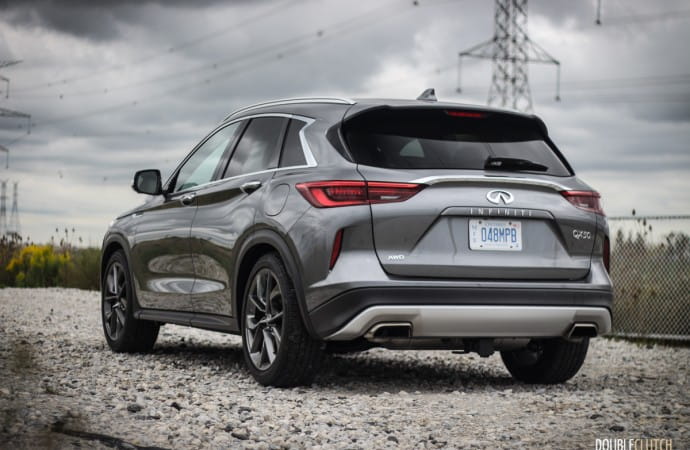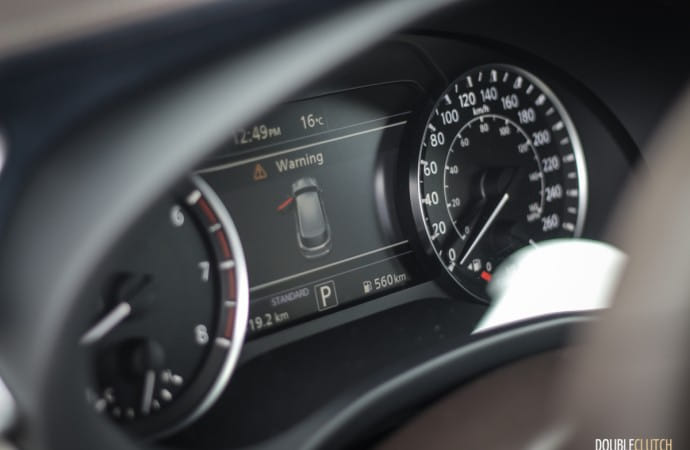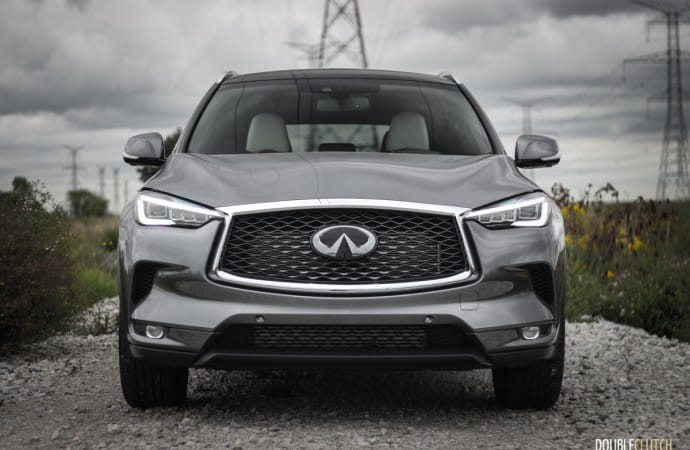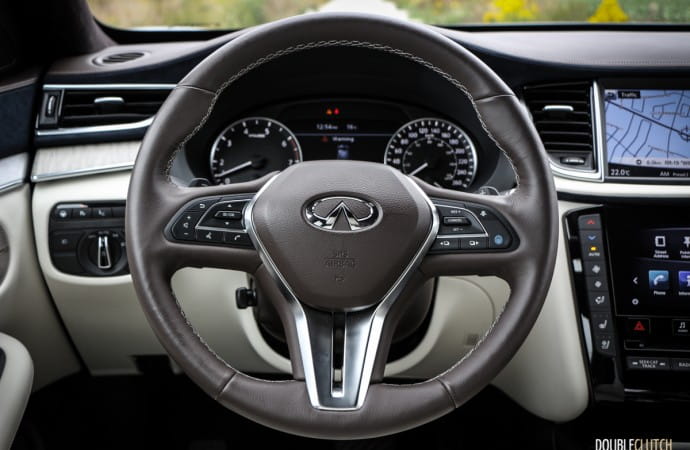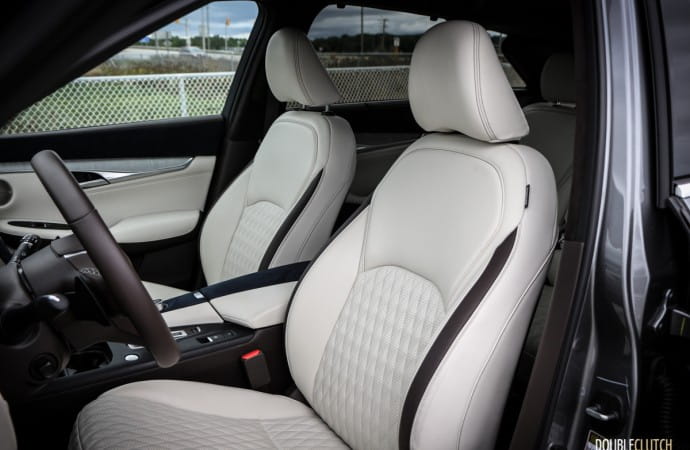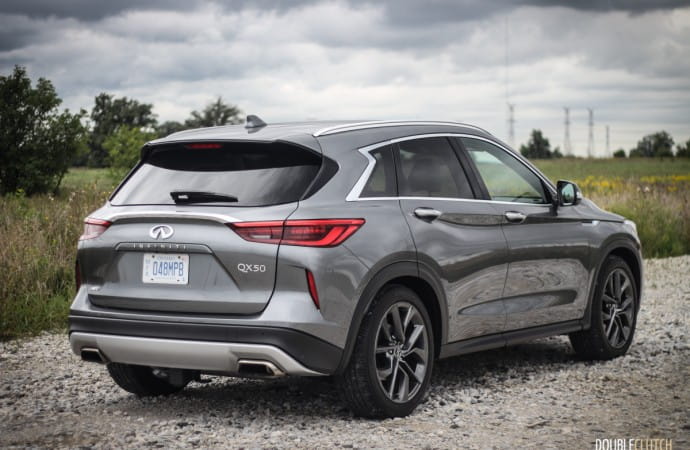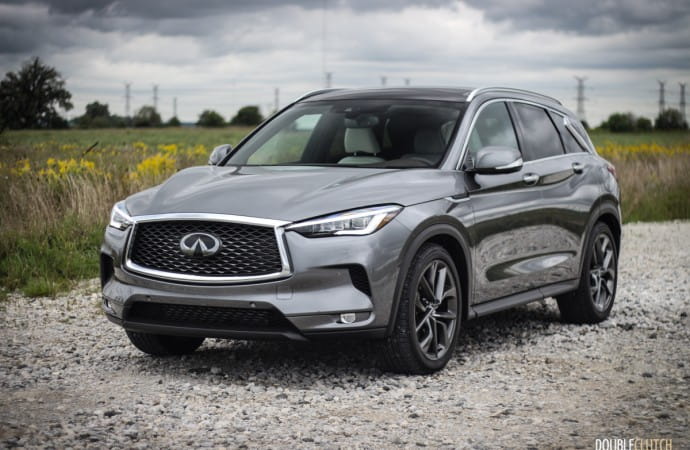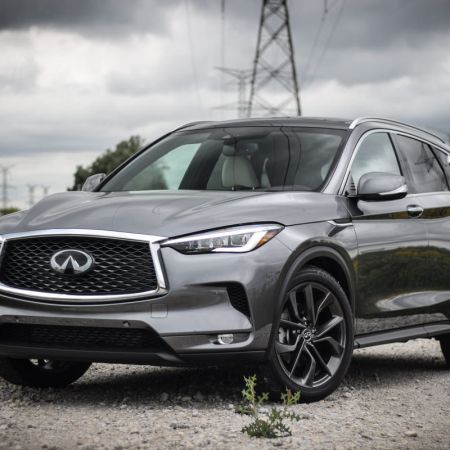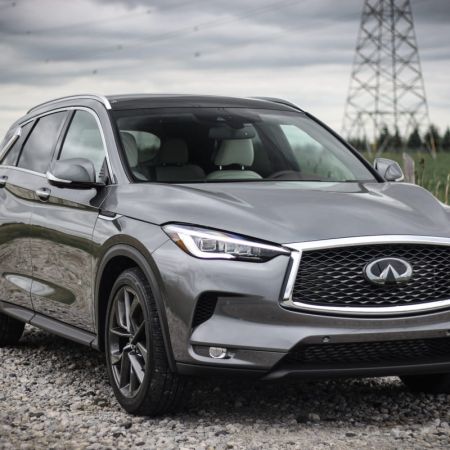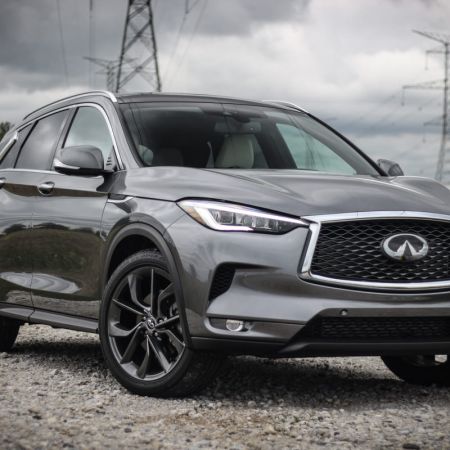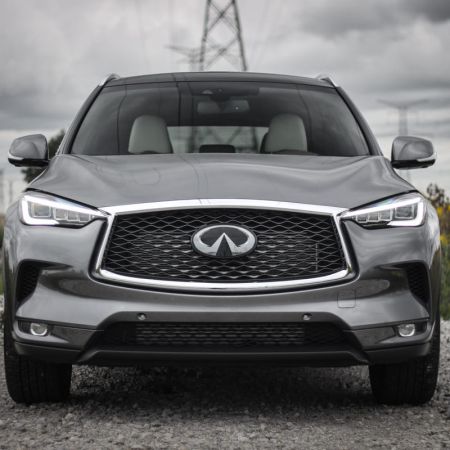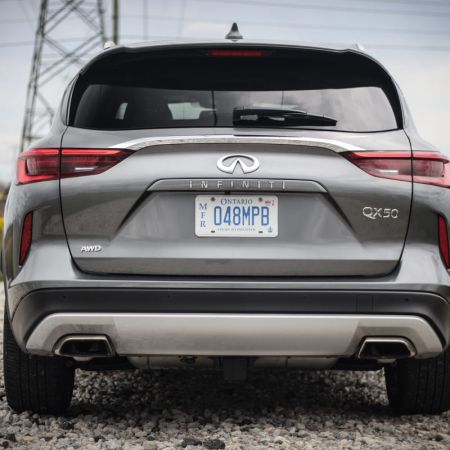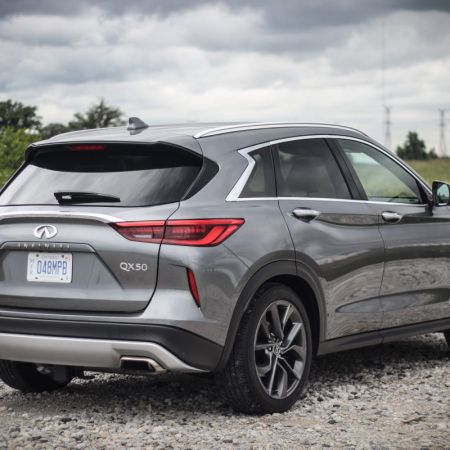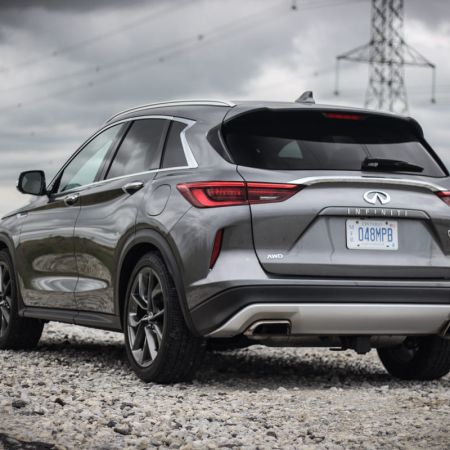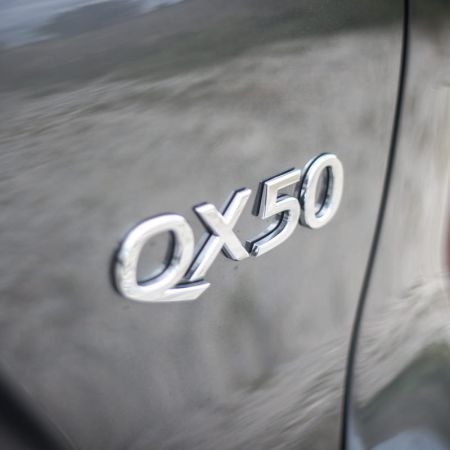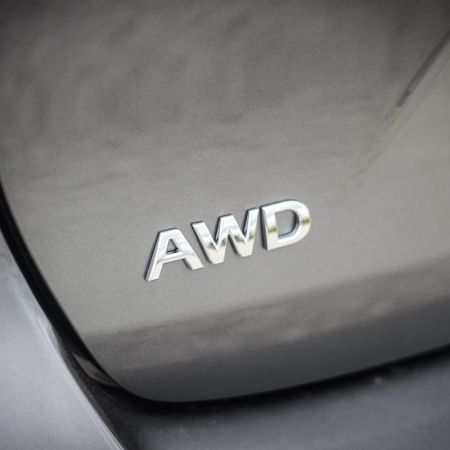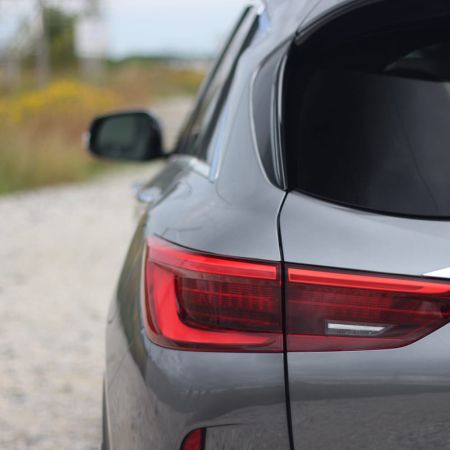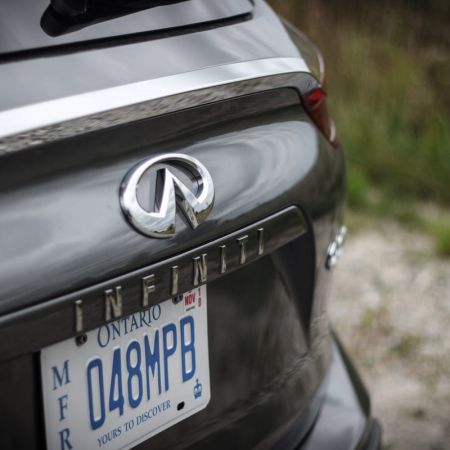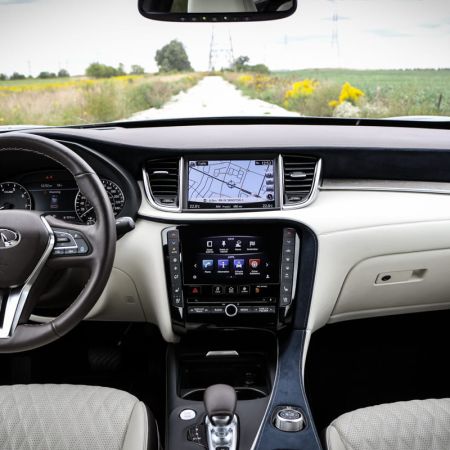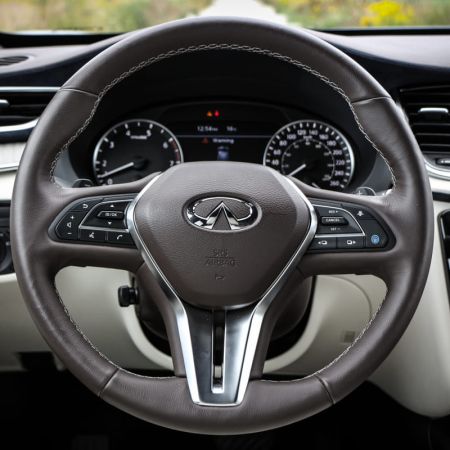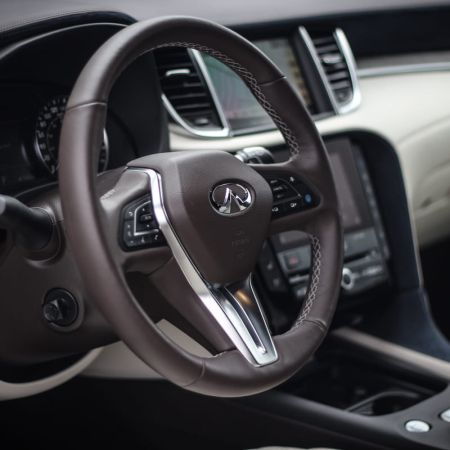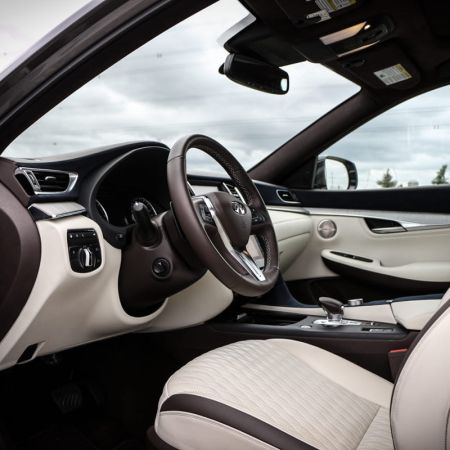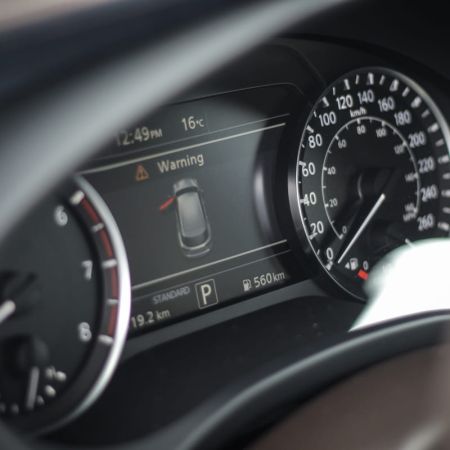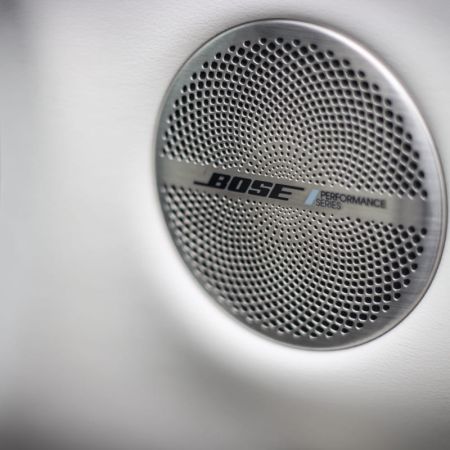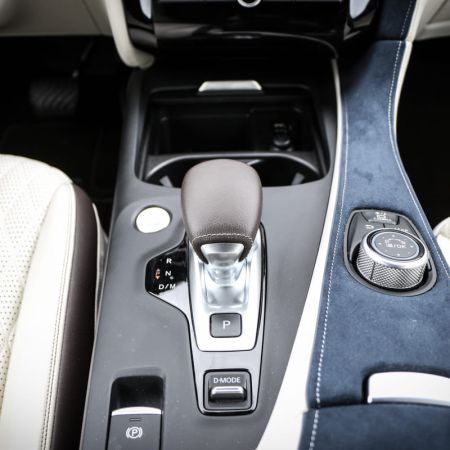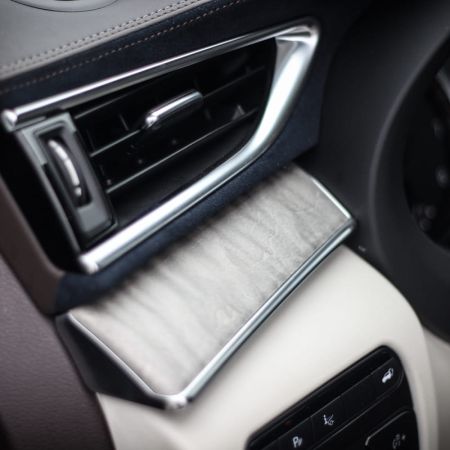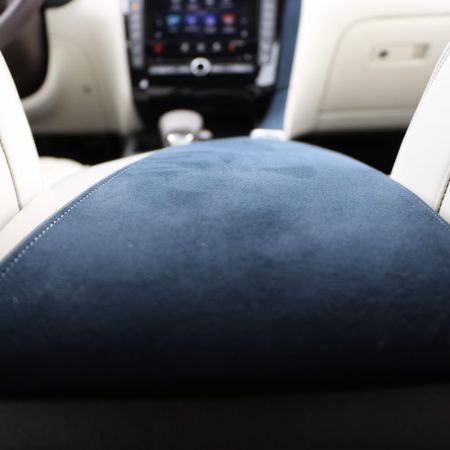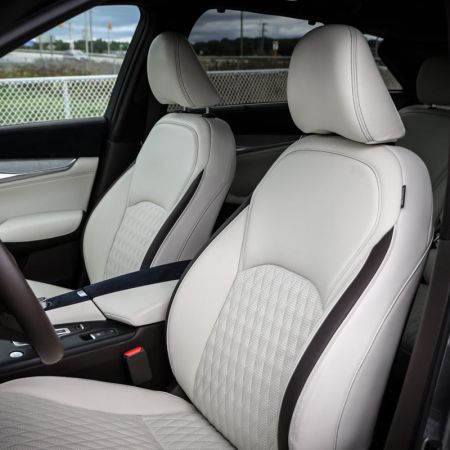The 2003 launch of the FX was huge, and for its time it was a looker with a fabulous pair of engines. It was the right crossover at the right time, and Infiniti has since largely ridden the wave of crossover success, but it would be hard to argue that any of their recent CUVs have had quite as much impact as the FX did. Times have changed too; the strict focus on economy has brought in four-cylinders. Infiniti is back, looking to reinvigorate their crossover lineup by delivering exactly what customers want; luxurious performance without a fuel penalty.
This is the new 2019 Infiniti QX50 Autograph; a five-passenger compact crossover that’s larger than the subcompact QX30 (reviewed here) but smaller than the QX60. The new QX50 employs a very interesting new engine that Infiniti calls the “VC-Turbo”, a variable compression turbo. This is the first widely available engine of its kind, and it’s a 2.0L four-cylinder turbocharged engine that adjusts its compression ratio from an efficient 14:1 to a powerful 8:1 ratio. It adapts to your drive by altering how far pistons move within the cylinders. The idea is that the engine’s ability to change compression characteristics will maximize both efficiency and power output, making for the perfect no-compromise engine.
At full output, the 2.0L delivers 268 horsepower and 280 lb-ft of torque at 1600RPM; impressive numbers and very comparable to what you might expect from a naturally aspirated V6. The innovative engine is mated to a CVT transmission, and while CVTs have come a long way, this particular combination needs some more refinement before full potential can be pulled out of this engine.
The VC-Turbo is surprisingly smooth in its ability to deliver large amounts of power and gain or drop revs, which is an impressive feat for such a complex motor. The CVT on the other hand can’t keep up with the snappy response from the engine, which means hard acceleration is met with lots of revving and noise, but a very delayed action followed by a bunch of confused artificial “gear changes”.
Hard acceleration aside, the QX50’s interesting powertrain makes for a very agreeable driving experience. It’s quick enough to execute highway passing with relative ease, and smooth enough to make in-town driving relaxing, as long as you keep off the throttle. Keeping off the throttle is also critical if you aim to take advantage of the fuel savings afforded by this latest mechanical innovation.
With a city driving and some romping around on the backroads I was initially disappointed with the fuel economy, which wasn’t returning results any better than a V6. However, once in commuter mode, on the highway, the little four-cylinder started to pay dividends. At the end of the week’s worth of commuting it averaged 10.7L/100km on the required premium fuel. That’s not shabby for an AWD crossover with the power that the QX50 offers.
Engine aside, the rest of the driving experience is right in line with the rest of Infiniti’s lineup. Continuing to use their electric steer-by-wire system, the steering is extremely light. In the case of the QX50, engineers have made a conscious effort to reduce harshness from the road travelling up through the wheel. This makes for a very refined and relaxing driving experience, but does nothing for that sense of connection to the road that enthusiast drivers crave.
The suspension is softly sprung which compliments the light steering well. This is absolutely not a driver’s CUV, but a very comfortable place to spend lots of time behind the wheel. That might not sound like a huge endorsement, but if I were in the market for a crossover, give me comfortable and refined over sporty any day.
Infiniti has always done well in the looks department and the new QX50 is no exception. Strong fluid lines, the signature Infiniti grille dominating the front end, a powerful looking clamshell style hood and dark charcoal 20” wheels on our tester give it a modern and edgy look. That said, finished in Graphite Shadow, our tester, despite being the top-line Autograph trim level, really had a tendency to blend into traffic.
If the exterior doesn’t stand out from the crowd though, the interior surely does. The Autograph trim takes an already well-appointed and luxurious interior and sends it over the top with white semi-aniline quilted leather seats and finishes the door panels and dashboard with the same white leather. It’s complimented with blue suede, blue piping and brown leather for the top of the dashboard.
The quality of materials is outstanding in this class and Infiniti has not been stingy with material either, finishing the sides and less visible portions of the seats with the same quality and detail as the main seating surfaces. The headliner is brown faux-suede, and satin aluminum accents are used on the steering wheel and other controls. Frequent touch controls like the heated steering wheel, gear selector, door handles and armrests all feel sturdy and are finished again with high quality materials.
The sense of luxury that the interior design provides is enhanced by the long list of features found in our Autograph tester including heated and ventilated front seats, heated rear seats, a massive panoramic sunroof, 16-speaker Bose Performance series sound system, and the full gamut of the latest safety and driving aids. The QX50’s interior really does provide the complete luxury experience, and that alone makes it a bit of a standout in the segment.
The one letdown on the inside of the QX50 though is the infotainment setup. It runs dual screens, but the upper screen is reserved strictly for a low-resolution navigation program that looks and feels many years outdated. I do like the fact that it’s controlled through a console-mounted rotary dial, but beyond that it’s a system I’d happily live without. The lower touchscreen does everything else, and it’s slicker looking, responsive and decently easy to navigate. The problem is that it doesn’t support Android Auto or Apple CarPlay, tech that’s become rather important to younger buyers in this segment.
Now we come to where the QX50 really surprised me. Some last minute logistical issues had me towing a 12-foot dual-axle open utility trailer across the city. Knowing that the QX50 had a tow package and a 3000-pound tow rating I decided to put it to the test. To be fair, this trailer and the load would probably weigh in under 2000-lbs, but I was really curious about how this new VC-T engine and the CVT would handle the task. The answer is; really well!
Even with the trailer, plus three adults in the vehicle, and heavy use of the air conditioning, the little 2.0L had no problem keeping up with traffic on the 401 across the city. When traffic inevitably slowed to a crawl, the brakes were perfectly adequate to slow us down without any drama. Sure, the four-cylinder laboured a little more, but that’s to be expected. The relatively short wheelbase means the ride got a little choppier with the trailer, but it was never uncomfortable.
Now you have a luxurious crossover that’s capable of some real work. With a starting price of $44,490 for a base model AWD Luxe, you can get into a QX50 at a very palatable price. There are five trim levels to choose from, each with a growing list of features and luxuries, up to the top-line Autograph trim, which is where our test vehicle falls at $57,990. At that price there are no options to add, so you can be into the ultimate QX50 for under $60,000.
At first glance, $60,000 seems like a lot for a four-cylinder crossover, but the QX50’s gorgeous interior definitely helps justify the price, not to mention the fact that it does compare favorably against most of its key competition on both power output and fuel economy. I also have to admit I am still gleefully impressed with how well it handled the trailer. There is value here, as long as you prefer your CUVs comfy, refined and capable rather than exciting to drive. I expect to see many of these on the road in the very near future.

